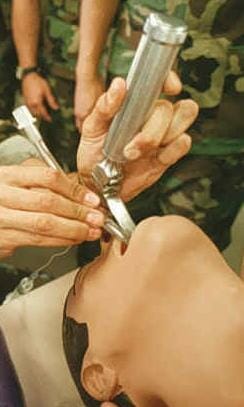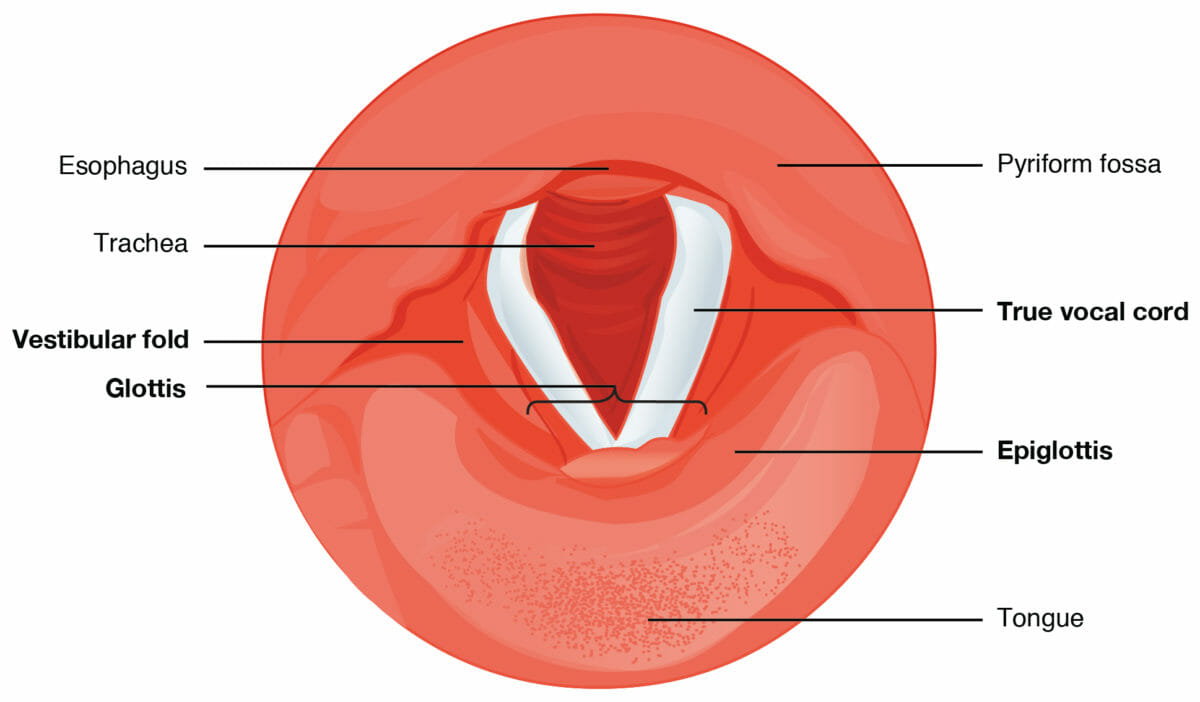An airway, breathing, and circulation (ABC) assessment is the mainstay for evaluating and treating critically ill individuals. The airway assessment helps identify individuals with potential obstruction of the airway, which may benefit from airway management techniques to ensure adequate ventilation and oxygenation. Measures to relieve and prevent soft-tissue obstruction in an unconscious individual can include special positioning maneuvers and airway adjuncts (such as oropharyngeal or nasopharyngeal airways). By relieving obstruction, assisted breathing with a bag-mask is more effective. Endotracheal intubation provides a more definitive way to ensure airway patency and protection.
Last updated: Dec 29, 2024
Assessing airway Airway ABCDE Assessment, breathing, and circulation Circulation The movement of the blood as it is pumped through the cardiovascular system. ABCDE Assessment is essential in the approach to treating critically ill patients Patients Individuals participating in the health care system for the purpose of receiving therapeutic, diagnostic, or preventive procedures. Clinician–Patient Relationship.
Visualization of the airway Airway ABCDE Assessment and observation of the individual can help determine the following:
Patent airway Airway ABCDE Assessment:
Partially obstructed airway Airway ABCDE Assessment:
Complete obstruction:
Determining whether an individual is breathing will also guide management options.
Note: During the ongoing COVID-19 COVID-19 Coronavirus disease 2019 (COVID-19) is an infectious disease caused by the severe acute respiratory syndrome coronavirus 2 (SARS-CoV-2) that mainly affects the respiratory system but can also cause damage to other body systems (cardiovascular, gastrointestinal, renal, and central nervous systems). pandemic, and especially in areas of high disease prevalence Prevalence The total number of cases of a given disease in a specified population at a designated time. It is differentiated from incidence, which refers to the number of new cases in the population at a given time. Measures of Disease Frequency, appropriate safety precautions are recommended to protect against inhalation of aerosolized viral particles which can be produced by airway Airway ABCDE Assessment manipulation; this is particularly true for endotracheal intubation Intubation Peritonsillar Abscess.
Unconscious Unconscious Those forces and content of the mind which are not ordinarily available to conscious awareness or to immediate recall. Psychotherapy individuals with spontaneous breaths and a patent airway Airway ABCDE Assessment can be placed in a recovery position (also known as semi-prone or lateral recumbent). This is generally used in the prehospital setting.

An individual in the recovery position
Image: “Checking carotidian pulse in recoversy position (simulated car accident)” by Michal Maňas. License: Public DomainThese maneuvers are typically performed on unconscious Unconscious Those forces and content of the mind which are not ordinarily available to conscious awareness or to immediate recall. Psychotherapy individuals with evidence of an upper airway obstruction Upper Airway Obstruction Airway Obstruction ( tongue Tongue The tongue, on the other hand, is a complex muscular structure that permits tasting and facilitates the process of mastication and communication. The blood supply of the tongue originates from the external carotid artery, and the innervation is through cranial nerves. Lips and Tongue: Anatomy occluding the glottis Glottis The vocal apparatus of the larynx, situated in the middle section of the larynx. Glottis consists of the vocal folds and an opening (rima glottidis) between the folds. Larynx: Anatomy).
Head-tilt/chin-lift maneuver:

Chin-lift maneuver:
The chin is lifted and the mouth slightly opened to relieve an upper airway obstruction.
Image: “Head tilt chin lift maneuver” by Another-anon-artist-234. License: Public Domain
Head tilt-chin lift maneuver:
First aid technique for clearing the airways
Jaw-thrust maneuver:

Jaw-thrust maneuver:
The jaw is moved anteriorly to relieve an upper airway obstruction.
Airway Airway ABCDE Assessment adjuncts are devices used to enhance and maintain an open airway Airway ABCDE Assessment, and can also aid in better bag-mask ventilation Ventilation The total volume of gas inspired or expired per unit of time, usually measured in liters per minute. Ventilation: Mechanics of Breathing (BMV). These devices are used in:
Technique to provide assisted breaths and deliver oxygen for:

Schematic depiction of bag-mask ventilation:
Hold the mask to the individual’s face while lifting the jaw. Use the other hand to deliver breaths by squeezing the bag.

Laryngeal mask airway (LMA):
The cuff is the wide, beige part that is inserted in the supraglottic region.

Insertion of an endotracheal tube using a laryngscope
Image: “Intubation” by Stanmar. License: Public Domain
Anesthesiologist using video laryngoscope during an intubation
Image: “Anesthesiologist using Glidescope video laryngoscope” by DiverDave. License: CC BY 3.0
The anatomy that should be visualized using a laryngoscope
Image: “Cartilages of the Larynx” by Betts, et al. License: CC BY 4.0